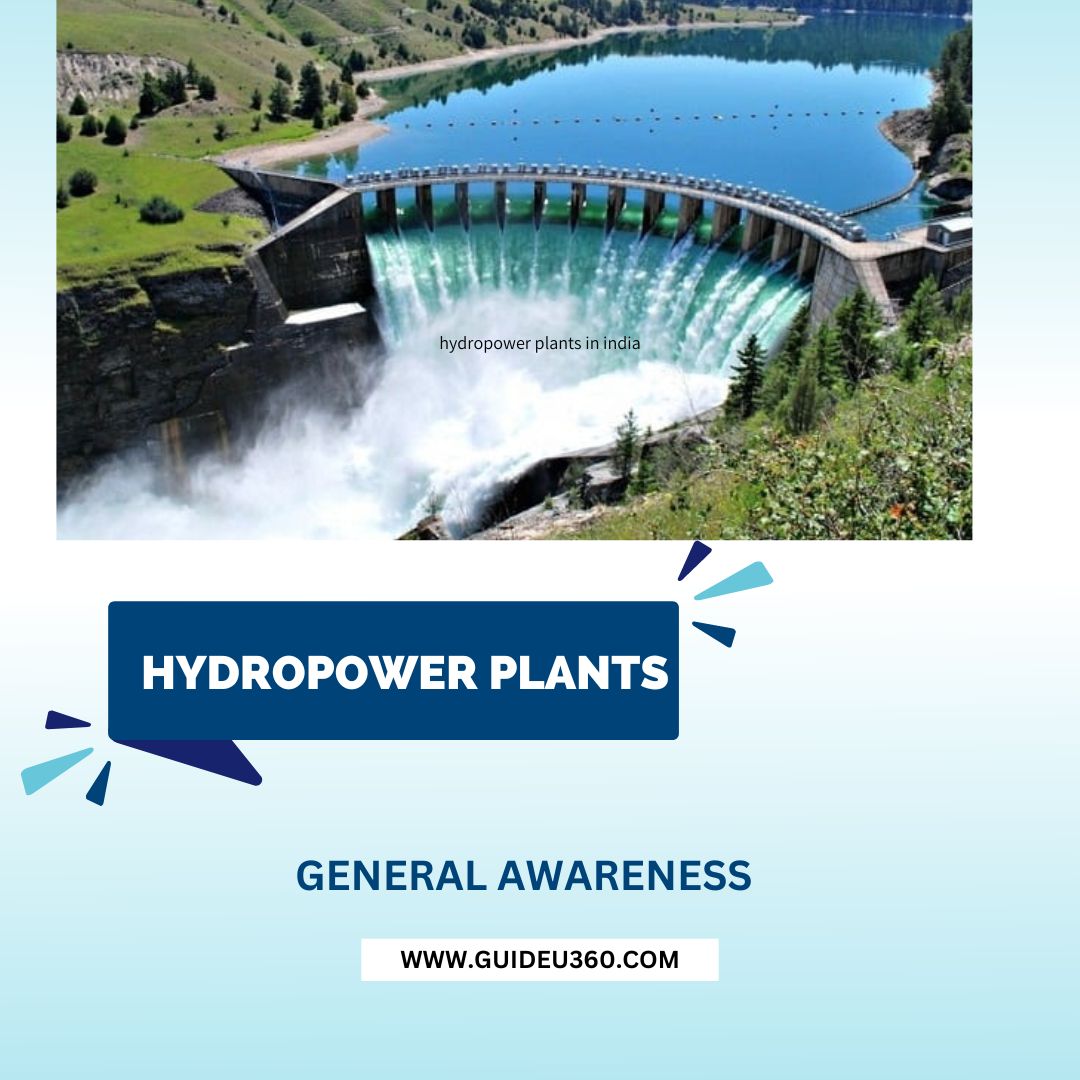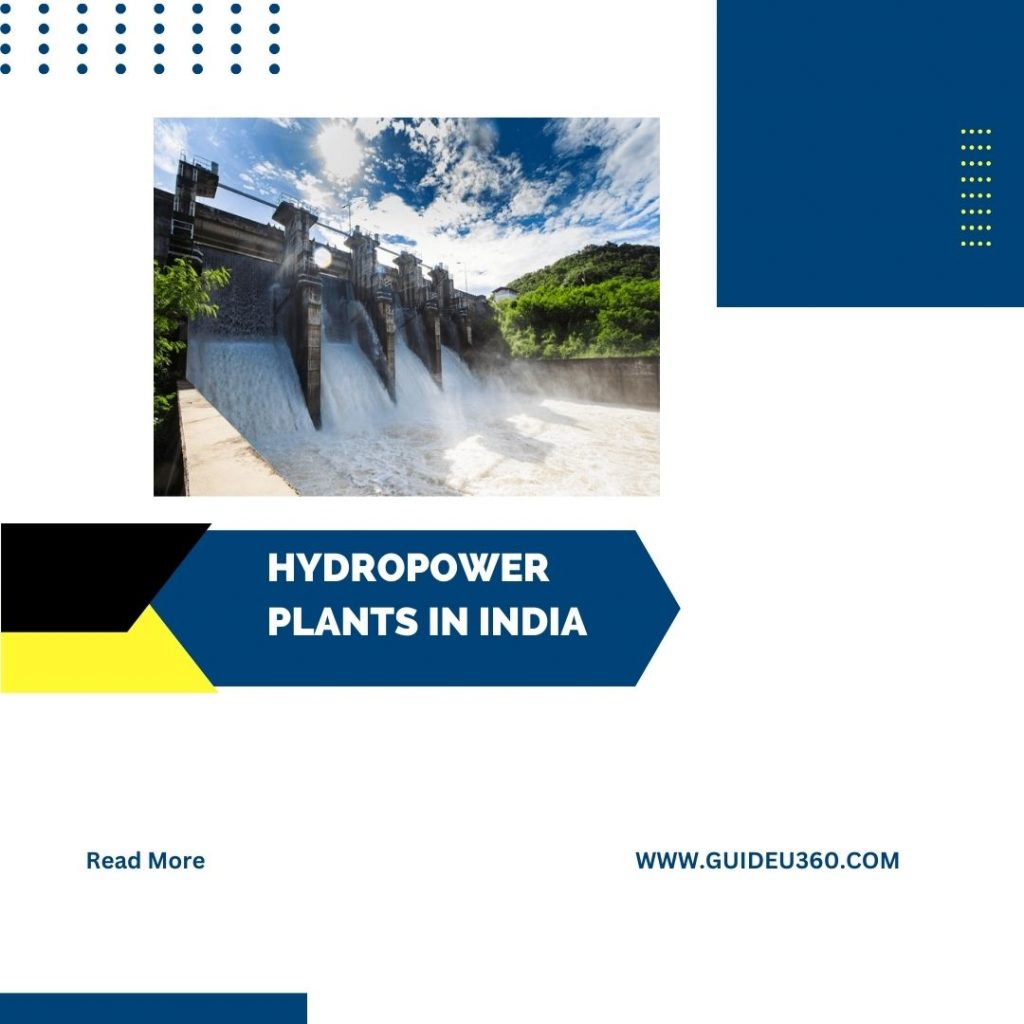India is blessed with vast water resources, and hydropower is one of the key renewable energy sources that the country has harnessed for decades. Hydropower plants play a crucial role in meeting India’s growing energy demands while contributing to sustainable development. In this post, we explore some of the major hydropower plants in India, their locations, and their significance in the country’s energy landscape.

1. Tehri Dam Hydroelectric Power Plant
Location: Uttarakhand
Capacity: 2,400 MW
Significance: The Tehri Dam is the tallest dam in India and one of the largest hydropower projects in the country. Located on the Bhagirathi River, this plant plays a crucial role in providing electricity to northern India. The Tehri Dam project includes the Tehri Dam & Hydropower Plant (1,000 MW), Koteshwar Hydroelectric Plant (400 MW), and Tehri Pumped Storage Plant (1,000 MW).
Key Features:
- Multi-purpose project providing irrigation, water supply, and hydropower generation.
- Helps in flood control and manages the downstream flow of water.
2. Sardar Sarovar Dam Hydroelectric Power Plant
Location: Gujarat
Capacity: 1,450 MW
Significance: The Sardar Sarovar Dam on the Narmada River is one of the largest dams in the world. It provides water for irrigation, drinking, and industrial purposes across several states, and its hydropower generation capacity is significant for the western region of India.
Key Features:
- Multi-purpose project benefiting states like Gujarat, Madhya Pradesh, Maharashtra, and Rajasthan.
- Key contributor to the electricity grid in western India.
3. Nathpa Jhakri Hydroelectric Power Station
Location: Himachal Pradesh
Capacity: 1,500 MW
Significance: The Nathpa Jhakri Power Station is the largest underground hydroelectric power project in India. Located on the Sutlej River, it plays a vital role in supplying electricity to the northern states.
Key Features:
- Equipped with six generating units of 250 MW each.
- Contributes significantly to the northern grid’s stability and reliability.

4. Bhakra Nangal Dam Hydroelectric Power Plant
Location: Himachal Pradesh and Punjab
Capacity: 1,325 MW
Significance: The Bhakra Nangal Dam is one of the oldest and most important hydropower plants in India. It is located on the Sutlej River and provides electricity to several northern states, including Punjab, Haryana, and Himachal Pradesh.
Key Features:
- Multi-purpose dam providing irrigation, water supply, and hydropower.
- A key source of energy for agricultural and industrial activities in the region.
Major Ports in India
5. Koyna Hydroelectric Project
Location: Maharashtra
Capacity: 1,960 MW
Significance: The Koyna Hydroelectric Project is one of the largest completed hydropower projects in India. It is located on the Koyna River in the Western Ghats and plays a crucial role in stabilizing the power supply in Maharashtra.
Key Features:
- Consists of four stages of power generation with varying capacities.
- Plays a significant role in flood control and irrigation.
6. Indira Sagar Hydroelectric Power Plant
Location: Madhya Pradesh
Capacity: 1,000 MW
Significance: Located on the Narmada River, the Indira Sagar Dam is one of the key hydropower plants in central India. It is also a major source of irrigation and water supply for the region.
Key Features:
- Largest reservoir in India by volume.
- Contributes to both power generation and water management in the region.
7. Idukki Hydroelectric Power Project
Location: Kerala
Capacity: 780 MW
Significance: The Idukki Dam, located on the Periyar River, is the largest arch dam in Asia and a vital source of electricity for Kerala. The Idukki Hydroelectric Power Project is one of the most significant power projects in southern India.
Key Features:
- Provides over half of the electricity consumed in Kerala.
- Important for the state’s power grid stability and reliability.
8. Subansiri Lower Hydroelectric Project
Location: Arunachal Pradesh and Assam (Under construction)
Capacity: 2,000 MW
Significance: Once completed, the Subansiri Lower Hydroelectric Project will be the largest hydroelectric power project in India. It is located on the Subansiri River, which is a tributary of the Brahmaputra River. This project is expected to play a major role in meeting the growing energy demands of northeastern India.
Key Features:
- Designed to produce 2,000 MW of electricity.
- Significant for the socio-economic development of the northeastern region.
9. Ranganadi Hydroelectric Project
Location: Arunachal Pradesh
Capacity: 405 MW
Significance: The Ranganadi Hydroelectric Project is located on the Ranganadi River and is a key source of electricity for the northeastern states. It helps in meeting the region’s energy needs and contributes to the stability of the local power grid.
Key Features:
- Operated by North Eastern Electric Power Corporation (NEEPCO).
- Important for energy security in the northeastern states.
Hydropower plants in India are a crucial component of the country’s renewable energy strategy. They not only provide a clean and sustainable source of electricity but also contribute to water management, flood control, and irrigation. As India continues to grow, expanding and modernizing its hydropower capacity will be essential to meeting the nation’s energy needs while reducing its carbon footprint.





